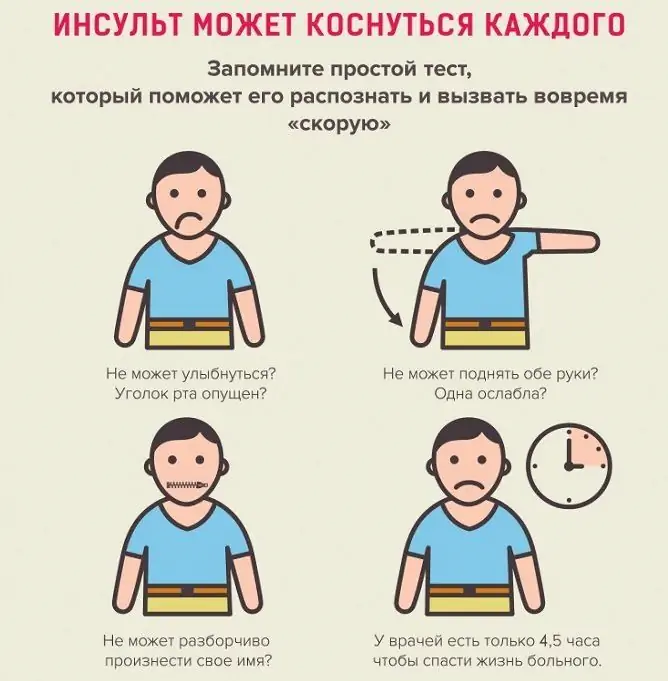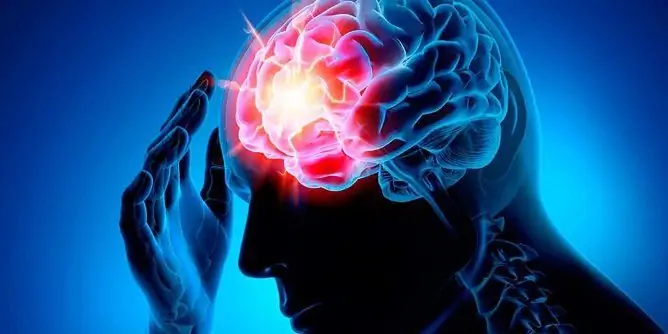- Author Rachel Wainwright [email protected].
- Public 2023-12-15 07:39.
- Last modified 2025-11-02 20:14.
Down Syndrome

Down syndrome is called a fairly common genetic disease, which is primarily characterized by a lag in mental and physical development. In 1866, British doctor John Langdon Down first described the symptoms of patients susceptible to this pathology. It is by his name that the syndrome is named. However, the causes of this genetic anomaly were identified only in the middle of the twentieth century by the French geneticist Lejeune.
Down syndrome causes
A pathology such as Down's syndrome is associated with an abnormality in the set of chromosomes and is characterized as the presence of an additional 47th chromosome in the karyotype, while the number 46 is the norm. This is manifested in disorders of the mental and physical development of a person. It should be said that one child out of 600-700 newborns is susceptible to this disease, regardless of ethnicity. This anomaly occurs with equal frequency among both sexes.
As already noted, the causes of Down syndrome were established relatively recently, although the opinions of specialists in this field on this issue still differ. Consider the main factors that affect the likelihood of pathology in children:
- The age of the parents;
- Closely related marriages;
- Age of the child's maternal grandmother.
The first cause of Down syndrome, according to medical observations, is the age of the child's mother. So, it is known that the probability of conceiving a child with this pathology at a woman's age from 25 to 30 years is 1 in 1000, from 35 to 40 - 1 in 200, and after 45 years - 1 in 20. So far, experts cannot fully explain the relationship between the syndrome and the age of the mother. Some of them believe that it is caused by disorders that arise during the second division of meiosis, which already occurs in an adult woman. It has also been established that the age of the child's father plays an important role, especially if he is over 42.
Closely related marriages are the least common cause of Down syndrome in the civilized world. However, the most interesting factor from a scientific point of view is the relationship between the disease and the age of the grandmother on the mother's side. Studies have shown that the older the grandmother was when she gave birth to her daughter, the more likely it is that her daughter will have a baby with this pathology.
This fact is explained as follows. Even in the womb, the female embryo undergoes the first division of meiosis, during which chromosomes diverge. Substances that come from the mother to the fetus during this period can also affect the development of its germ cells. Female children are born with a ready-made set of future eggs, which have already passed the first division of meiosis. It is among this set that a certain part of the eggs have an extra chromosome, and if one of them is fertilized later, the child will be born with Down syndrome. Thus, it is believed that the number of such cells in the ovaries of a newborn directly depends on the age of her mother.
Down syndrome signs
Today, a woman during pregnancy can undergo some examinations to determine whether the fetus has this genetic anomaly. It is known that they are the reason for the decrease in the number of sick children in recent years, since many women in a position, having identified violations, terminate pregnancy.
If the child has already been born, then a number of characteristic external signs of Down syndrome may indicate the presence of the disease:
- Facial plane and occiput;
- Shortened skull;
- Short arms and legs;
- Short toes;
- Skin fold covering the corner of the eye;
- A fold of skin on the neck.
These are the most common signs of Down syndrome, which are observed in 70-90% of cases. Along with this, there are others that are less common, but are also characteristic of this disease. Among them are the following:
- The plane of the bridge of the nose and nose;
- Wide and short neck;
- Curvature of the little finger;
- Development of cataracts after the age of eight;
- Tooth anomalies;
- Open mouth;
- Arcuate sky.
In addition, in the development of Down syndrome, pathologies such as muscle hypotension, chest deformity, strabismus, congenital heart disease and leukemia can be noted.
Down syndrome diagnosis
In order to detect the development of Down syndrome, there are some basic diagnostic methods. The first of these is an ultrasound examination. In the first trimester of pregnancy, a woman may be tested to measure the collar space of the fetus. If, according to the results of a test carried out using a vaginal sensor, its thickness exceeds 2.5 mm, then we can talk about the presence of a disease in the unborn child. If the study was carried out through the anterior abdominal wall, then the presence of pathology in the fetus is indicated by an indicator of 3 mm. In addition, it is possible to conduct an ultrasound scan for the presence of a nasal bone: with the development of Down syndrome, it is either very small in the fetus or is absent at all.

The second common diagnostic method in this case is a double biochemical blood test at the 10-13th week of pregnancy and a triple one - at the 16-18th week. After the results of ultrasound and tests are obtained, for a reliable diagnosis of Down syndrome, chorionic biopsy or amniocentesis can be performed, which most accurately recognize the presence of genetic abnormalities in the fetus. Chorionic biopsy involves analyzing the tissue of the embryonic membrane, and amniocentesis is a puncture of the anterior wall of the mother's abdomen in order to take fetal tissue or amniotic fluid for analysis.
It should be noted that these procedures are very dangerous, both for the health of the expectant mother and the child. During the examination, damage to the internal organs of a woman, bleeding, fetal injury, and the threat of termination of pregnancy are possible.
It is important to add that Down syndrome until recently was considered an incurable disease. However, quite recently, an experiment was conducted in the United States that gives comforting predictions. The study revealed the possibility of blocking an extra chromosome in the karyotype, which affects the development of pathology.
YouTube video related to the article:
The information is generalized and provided for informational purposes only. At the first sign of illness, see your doctor. Self-medication is hazardous to health!






